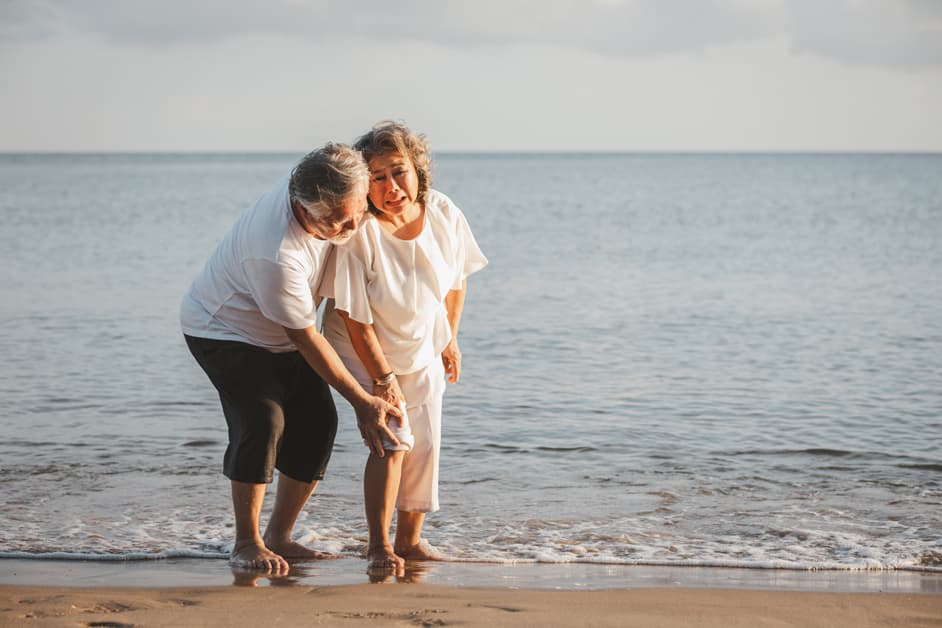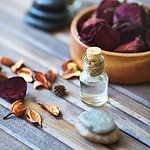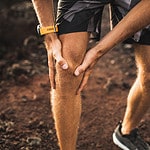Introduction to Knee Pain
Knee pain is now an usual problem for many age ranges. It might be due to an injury, or simply from using it too much. Luckily, there are natural remedies that can help. Here, we’ll cover why it happens plus the best ways to manage and treat it:
What is Knee Pain?
Knee pain is a term for any discomfort, soreness, or aching in or around the knee joint. It can range from mild to severe and come with inflammation and movement restriction. Causes include:
- Wear-and-tear injuries when cartilage wears away around the knee joint. Osteoarthritis, common in people aged over 50 after years of physical activity, is one type.
- Arthritis is an inflammation of one or more joints with stiffness and pain.
- Bursitis is an inflammation of the sacs around the kneecap.
- Tendonitis is an irritation or swelling of tendons.
Knowing how severe your pain is helps you decide how to act. Mild soreness after running or sports may need rest and cold compression. But chronic pain when kneeling, climbing stairs, or squatting needs medical attention for long-term relief.
Causes of Knee Pain
Knee pain can affect people of any age. It might be because of one factor, or a combination. Wear and tear of the knee joint is the most common cause. This can happen when you do activities like running, aerobics and climbing stairs without support. Previous injuries to ligaments or cartilage weaken and cause pain over time. Arthritis in the joint also leads to discomfort. Gout affects the area around the knee and causes pain.
If there is only one cause, natural remedies and rest can help. If there are multiple, medical intervention might be necessary. Seek medical attention as soon as possible to diagnose the root cause before it gets worse.
Natural Remedies for Knee Pain
Knee pain from joint wear? Common amongst adults. People often use medications or surgery for relief, but there are natural methods, too. Here’s how to handle the pain without drugs!
We’ll discuss the following strategies and natural remedies:
- Strategies
- Natural remedies
Rest and Ice
Temporarily pausing use of the knee can help ease pain from wear and tear. An RICE approach (rest, ice, compression, elevation) may be useful for reducing inflammation and alleviating pain.
- Take a rest of at least two days before any activity.
- Using an icepack over the area several times a day for 15-20 minutes each time can reduce inflammation. Wrap the icepack in a cloth or towel to make sure it’s not too hot or cold when placed on the skin.
- Compression with an inflatable wrap or brace can help stabilize the joint and lower swelling.
- Elevate both legs for 20-30 minutes each day to get the most benefit.
Stretching and Strengthening Exercises
Stretch and strengthen exercises can help you with flexibility and muscle strength. Make sure to use a proper warm-up before any exercise. Focus on the muscles surrounding the knee, like the quadriceps, hamstrings and calves. Stretch slowly and don’t go past any pain or discomfort.
Do strengthening exercises that support healthy alignment of your hips, knees, ankles and feet when standing or walking. It may be helpful to get a physical therapist for guidance.
Some strengthening exercises for knee pain include:
- Wall sits
- Modified step ups
- Bridges
- Heel slides
Target 10 to 15 reps per set and two to three sets per exercise. Rest for two minutes between each set if needed.
Massage and Acupuncture
Massage and acupuncture are two natural remedies believed to reduce pain and improve healing. Massage can relax muscle tension and break up adhesions. It can also help with circulation around the knee. Acupuncture works by targeting specific points that balance the body’s energy systems, promoting relaxation and reducing swelling.
When it comes to massage for knee pain, there are two main types: Swedish and deep tissue. Swedish massage uses light strokes with a softer touch to reduce tension in tendons and muscles. Deep tissue massage has slower strokes that work deeper into connective tissues around the knee joint. It can be beneficial for chronic knee pain caused by injury or arthritis, but should be used carefully due to its intensity.
Acupuncture works by stimulating specific acupoints along the body’s energy pathways (meridians). These points may reduce inflammation, stimulate improved blood flow, provide localized relief from discomfort and promote overall relaxation. Depending on a person’s medical history and health status, acupuncture can be performed either directly on a patient’s affected joint or on other parts of the body. All techniques aim to support healing effects through energetic balancing from manually stimulating traditional meridians.
Herbal Supplements and Homeopathic Remedies
Herbal and homeopathic remedies can be used to ease joint inflammation and stiffening that come with age.
Ginger is one herb that can reduce inflammation, muscle aches and stiffness. Turmeric may help with swelling, stiffness and painful movement. Frankincense (Boswellia serrata) and Curcumin (main active ingredient in turmeric) can offer anti-inflammatory properties. Devil’s Claw (harpagophytum procumbens) is an herb known to treat back pain and arthritis, and has been found effective in reducing knee joint pain. Cayenne pepper, which contains capsaicin, has shown to reduce inflammation.
Homeopathic remedies also use natural ingredients from plants or minerals. Popular homeopathic remedies for knee pain are:
- Rhus toxicodendron – especially when cold weather or dampness make the joints more stiff
- Bryonia alba – relieves pain when kneeling or squatting
- Arnica Montana – helps ease swelling from a fall or overexertion.
Strategies for Managing Knee Pain
Knee pain from overuse can be hard to tackle. There are lots of natural treatments and plans for dealing with this kind of pain. This piece will look at a few of these remedies and plans – from resting and changing activities to relieving pain, and more:
- Resting and changing activities
- Relieving pain
- Stretching and strengthening exercises
- Using a brace or wrap
- Using heat or ice
- Taking supplements
- Using topical treatments
Proper Posture and Ergonomics
Body positions can have a huge effect on knee pain. Good posture and ergonomics help joint health and reduce distress. When seated, rest your feet flat on the ground and make sure your knees are bent at a right angle. When standing for long periods, put weight on both legs equally. Avoid slouching, as it puts more stress on the knees. Also, take note of how much you move during the day. Don’t over-squat or kneel when possible.
If jogging is too hard for your joints, take brisk walks instead. Before starting an exercise program, get guidance from a doctor. Use assistive devices like ankle braces or walking sticks to give your knees extra help when exercising or walking around.
Proper Footwear and Orthotics
Footwear and Orthotics – Wear good-fitting, supportive shoes to reduce knee pain. Arch supports or orthotics, heel cups, and cushioning can lessen the knee stress when walking. Avoid high heels or unstable shoes that add strain to feet and leg joints. Shoes designed for arthritis or other knee problems are available.
Weight Loss and Exercise
Managing knee pain caused by wear and tear involves maintaining a healthy body weight. Physicians suggest that those who are overweight should try to lose excess fat.
Aerobic exercise and walking can improve circulation. They also strengthen the muscles around your knees and maintain joint flexibility. Swimming and water aerobics are non-weight bearing activities. Bicycling on flat surfaces is helpful too.
Stretching exercises reduce pain. They increase flexibility and improve range of motion in your legs and hips. Stationary cycling strengthens leg muscles. This reduces strain on the joints when you move around during daily activities. Strength training helps build supporting muscles for the knee joint. A physical therapist can guide you to safely build strength over time without overdoing it.
Conclusion
We’ve considered it all. Natural solutions, treatments, and plans. We’ve come to the conclusion that following these strategies can reduce knee discomfort caused by wear and tear. Natural approaches can help minimize inflammation and soreness. Most importantly, it’s essential to understand the source of the knee pain for long-term success in controlling it.
Summary of Natural Remedies and Strategies
Managing knee pain due to wear and tear? Natural remedies and strategies can help!
- Cold compress to reduce swelling and inflammation,
- ibuprofen,
- regular stretching,
- rest, and
- taking a break from impact exercises like running or jumping
are all good remedies. Severe symptoms? Physical therapy or bracing may be necessary. Diet modifications can also help reduce inflammation. With regular treatment and guidance from a healthcare professional, lasting relief from joint pain is achievable. Implement natural remedies and strategies for successful pain management!
Frequently Asked Questions
Q1: What are the most effective natural remedies for managing knee pain?
A1: The most effective natural remedies for managing knee pain include stretching and strengthening exercises, low-impact aerobic activities, yoga, massage, acupuncture, and application of heat or cold.
Q2: What types of stretching and strengthening exercises are beneficial for knee pain?
A2: Examples of beneficial stretching and strengthening exercises for knee pain include leg lifts, wall squats, and hamstring stretches. Additionally, exercises that strengthen the quadriceps, hamstrings, and hip muscles can help support the knee joint.
Q3: Are there any lifestyle changes that can help manage knee pain caused by wear and tear?
A3: Yes, lifestyle changes such as maintaining a healthy weight, avoiding high-impact activities, and using supportive devices such as a cane or brace can help manage knee pain caused by wear and tear.





